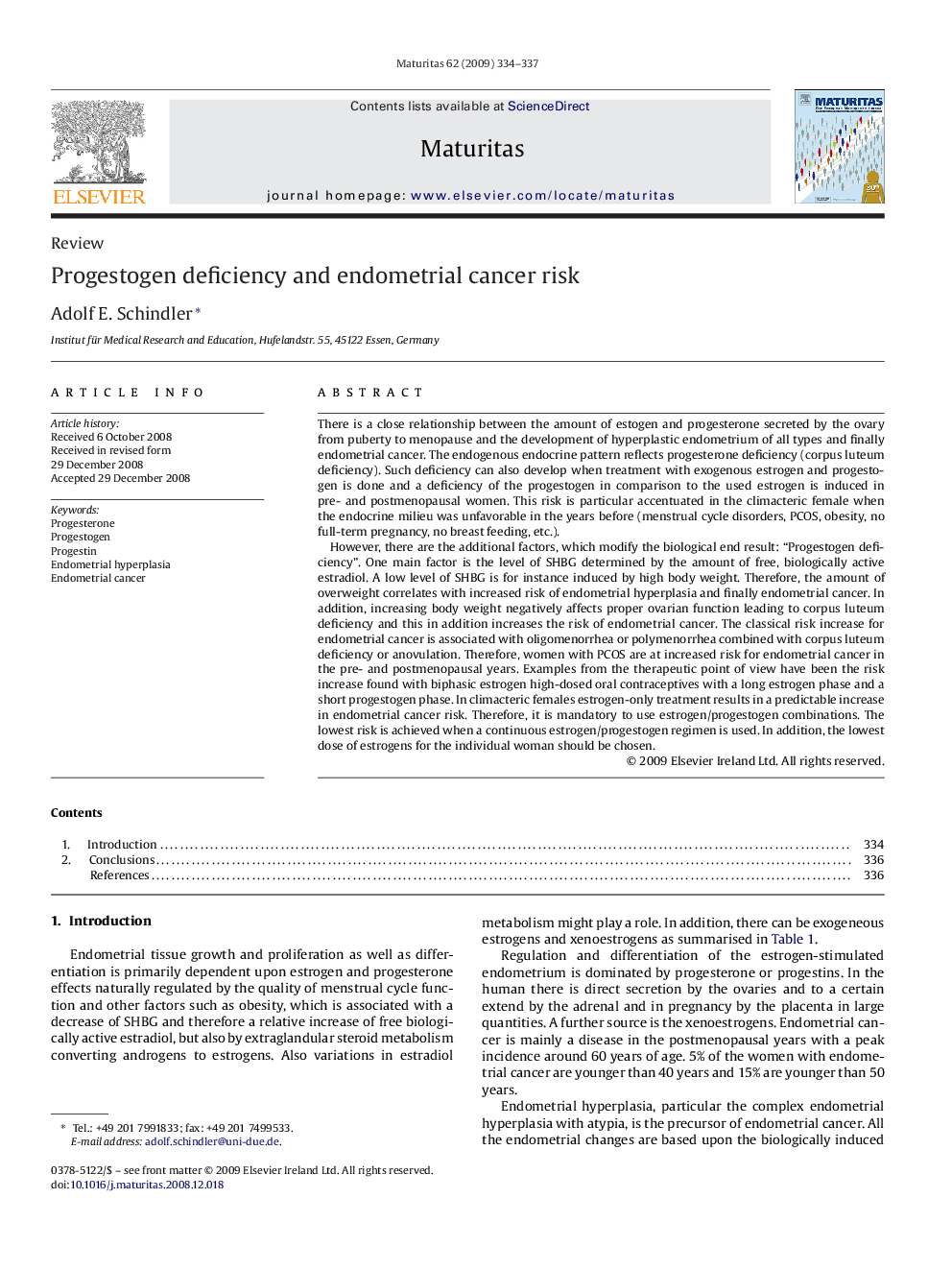| Article ID | Journal | Published Year | Pages | File Type |
|---|---|---|---|---|
| 1918480 | Maturitas | 2009 | 4 Pages |
There is a close relationship between the amount of estogen and progesterone secreted by the ovary from puberty to menopause and the development of hyperplastic endometrium of all types and finally endometrial cancer. The endogenous endocrine pattern reflects progesterone deficiency (corpus luteum deficiency). Such deficiency can also develop when treatment with exogenous estrogen and progestogen is done and a deficiency of the progestogen in comparison to the used estrogen is induced in pre- and postmenopausal women. This risk is particular accentuated in the climacteric female when the endocrine milieu was unfavorable in the years before (menstrual cycle disorders, PCOS, obesity, no full-term pregnancy, no breast feeding, etc.).However, there are the additional factors, which modify the biological end result: “Progestogen deficiency”. One main factor is the level of SHBG determined by the amount of free, biologically active estradiol. A low level of SHBG is for instance induced by high body weight. Therefore, the amount of overweight correlates with increased risk of endometrial hyperplasia and finally endometrial cancer. In addition, increasing body weight negatively affects proper ovarian function leading to corpus luteum deficiency and this in addition increases the risk of endometrial cancer. The classical risk increase for endometrial cancer is associated with oligomenorrhea or polymenorrhea combined with corpus luteum deficiency or anovulation. Therefore, women with PCOS are at increased risk for endometrial cancer in the pre- and postmenopausal years. Examples from the therapeutic point of view have been the risk increase found with biphasic estrogen high-dosed oral contraceptives with a long estrogen phase and a short progestogen phase. In climacteric females estrogen-only treatment results in a predictable increase in endometrial cancer risk. Therefore, it is mandatory to use estrogen/progestogen combinations. The lowest risk is achieved when a continuous estrogen/progestogen regimen is used. In addition, the lowest dose of estrogens for the individual woman should be chosen.
